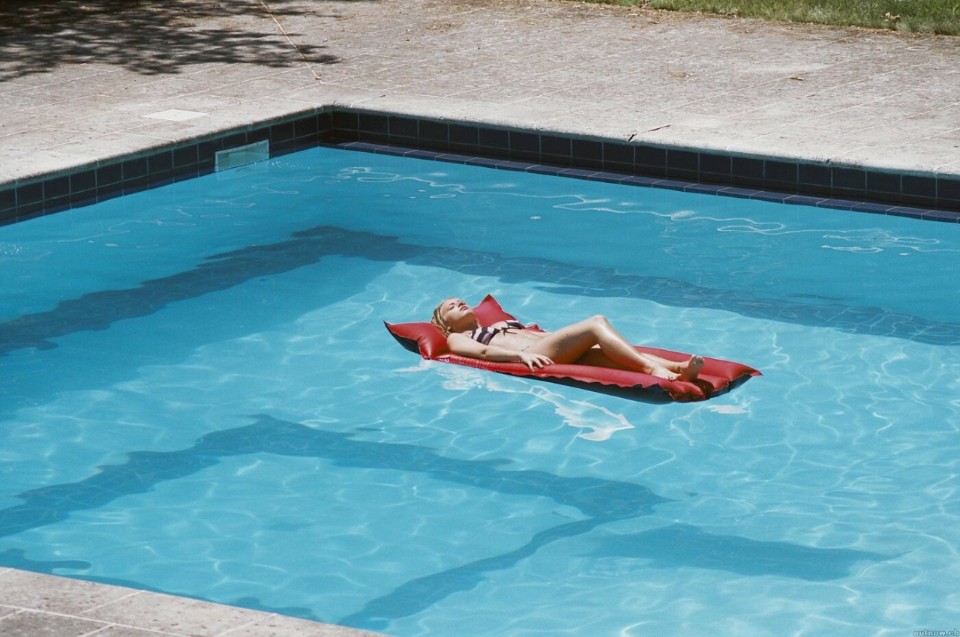Some have made it an erotic container, others a detonator for conflict and competition. Some have enhanced it as a space for vital regeneration, while others have seen it as a place of funereal and mortal decline. If there is a place that cinema has subjected to the most astonishing semantic, symbolic, and metaphorical twists, it is undoubtedly the swimming pool. It is there, in the clear waters of the swimming pool at the Waldhaus Flims Wellness Resort in the Swiss canton of Graubünden, that Michael Caine and Harvey Keitel meditate on life and contemplate in ecstasy the body of Madalina Ghenea as she glides smoothly through the same water in which they are immersed in Paolo Sorrentino’s Youth (2015). But it is also in a pool where the corpse of a young man, an aspiring screenwriter, floats with two bullets in his back and one in his stomach at the beginning of Billy Wilder’s Sunset Boulevard.

A closed space within the geometry of its material borders, the swimming pool on screen is always a place of twists and contradictions, as well as an open space for emotional, sentimental, aesthetic, and relational experimentation. An emblematic example of a swimming pool with an eroticizing effect is found in Jacques Deray’s film La Piscine (1969), with Alain Delon, Romy Schneider, Maurice Ronet, and Jane Birkin engaged in a strange four-way relationship in a villa with a pool on the French Riviera, amid tanned bodies, creeping desires, and homicidal urges.
If there is a place that cinema has subjected to the most astonishing semantic, symbolic, and metaphorical twists, it is undoubtedly the swimming pool.
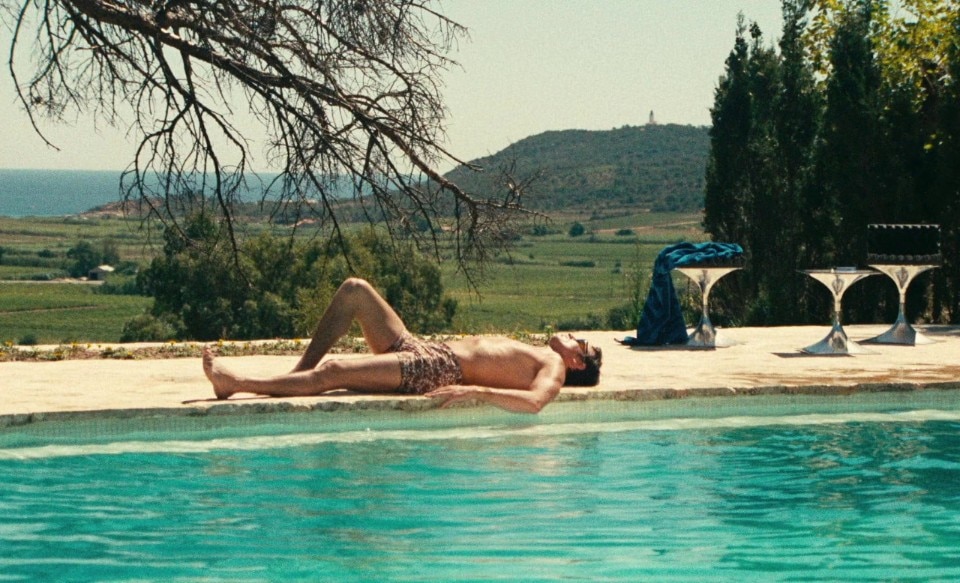
A Bigger Splash (2015) by Luca Guadagnino moves in a similar direction, drawing inspiration from a famous painting by David Hockney – an icon of 1960s pop art – to recreate the pool connected to the dammuso in Pantelleria where the movie takes place. In the painting – which has the same title as the film – a typical Californian pool is depicted with a hyper-realistic, alienating gaze. There is no human presence, only a splash of white rippling the blue water of the pool, indicating that someone, perhaps, has just dived in. Who? What happened before? And after? In a sort of suspended time, the relationships around the pool in A Bigger Splash are questioned.
The swimming pool becomes a kind of well of desire. It carries the characters’ desire to the unconscious with its welcoming liquid. In short, it is a real erotic device: a space for the distribution and circulation of quivers, glances, and urges. Something like what happens in Swimming Pool (2003), which weaves a subtle web of desires and seductions between a 50-year-old writer in a creative crisis (Charlotte Rampling) and the 20-year-old daughter of the publisher (Ludivine Sagnier) by a pool in a villa in the South of France. It is as if the pool facilitates the liquefaction of roles, the fluidity of desires, and the nomadism of identity and sexuality.
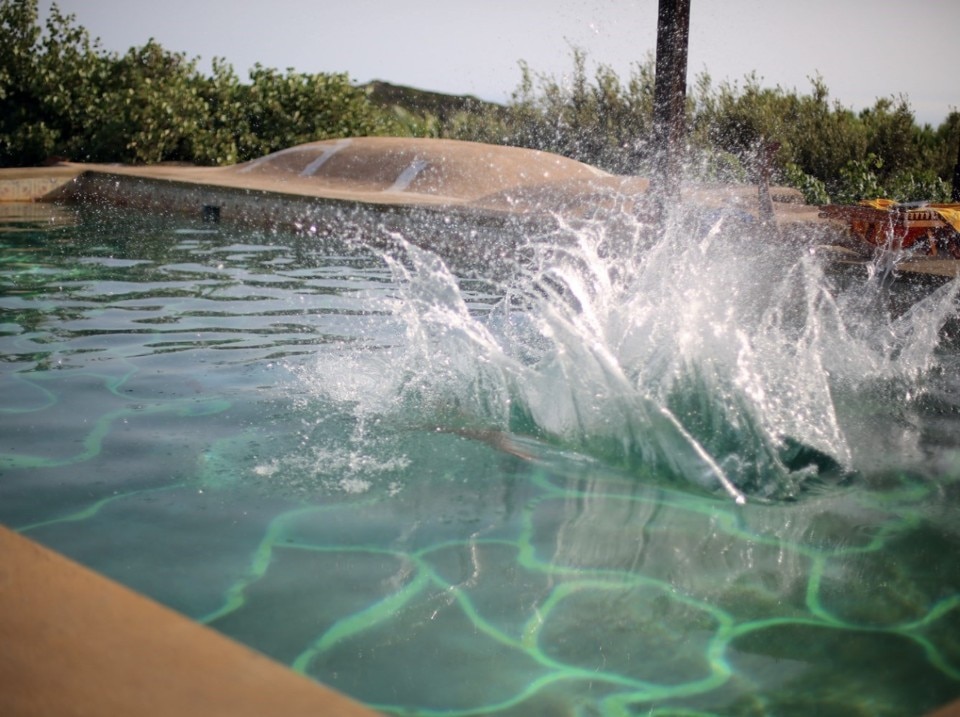
The swimming pool becomes a kind of well of desire. It carries the characters’ desire to the unconscious with its welcoming liquid. In short, it is a real erotic device.
However, the erotic aspect is just one of the many symbolic interpretations the swimming pool has been subjected to by the cinema. In The Swimmer (1968) by Frank Perry, based on a famous short story by Cheever, Burt Lancaster is a man who has lost himself and decides, on a hot summer afternoon, to swim home through all the pools of the nearby villas, inhabited by those who once knew him. Pool by pool, this nostos, the journey home, is an opportunity for a face-to-face encounter with himself and his existential and emotional past.
Krzysztof Kieślowski’s Three Colours: Blue (1993) has a similar intensity. The protagonist Julie (Juliette Binoche), who has lost her husband and daughter in a tragic accident and has to deal with her past and the life that goes on, frequently immerses herself in the blue water of a pool in search of oblivion and a sort of purification from pain, a state of insensitivity, almost a return to the maternal womb. Conversely, in Giulia Doesn’t Date at Night (2009) by Giuseppe Piccioni, an indoor pool is the meeting place for two lost souls, a successful writer who wants to learn to swim and a mysterious instructor who cannot go out at night and seems to find herself only in the water and in swimming. Even in Romeo+Juliet (1997) by Baz Luhrmann, it is in a pool where the two ill-fated post-Shakespearean lovers, played by Leonardo DiCaprio and Claire Danes, find each other, and find passion and purity, too.

There are also ‘signature’ swimming pools: in Jacques Tati’s film Mon Oncle (1958), the Arpel family’s villa features an ultra-modern and minimalist design perfectly consistent with the small, rectangular, geometric pool, in line with the orderly and rational aesthetics of the house designed by architect Jacques Lagrange. Made with 1950s materials, it is more of a status symbol than a functional space, since the inhabitants rarely use it for swimming.
Another signature pool is in L.A. Confidential (1997) by Curtis Hanson. It is located in the villa of one of the characters, the Lovell Health House designed by the great architect Richard Neutra. This pioneering, daring work looks like a ship stranded on a verdant hill in Los Angeles, with a pool almost absorbed into the foundation’s platform of the house, a virtuous example of perfect integration of a modernist project with the surrounding environment. Not to mention the pool symbolizing hedonism, luxury, and superficiality in the villa designed by John Lautner where The Dude goes to meet a pornographic film producer in The Big Lebowski (1998) by the Coen brothers.
The villa features an ultra-modern and minimalist design perfectly consistent with the small, rectangular, geometric pool, in line with the orderly and rational aesthetics of the house designed by architect Jacques Lagrange.
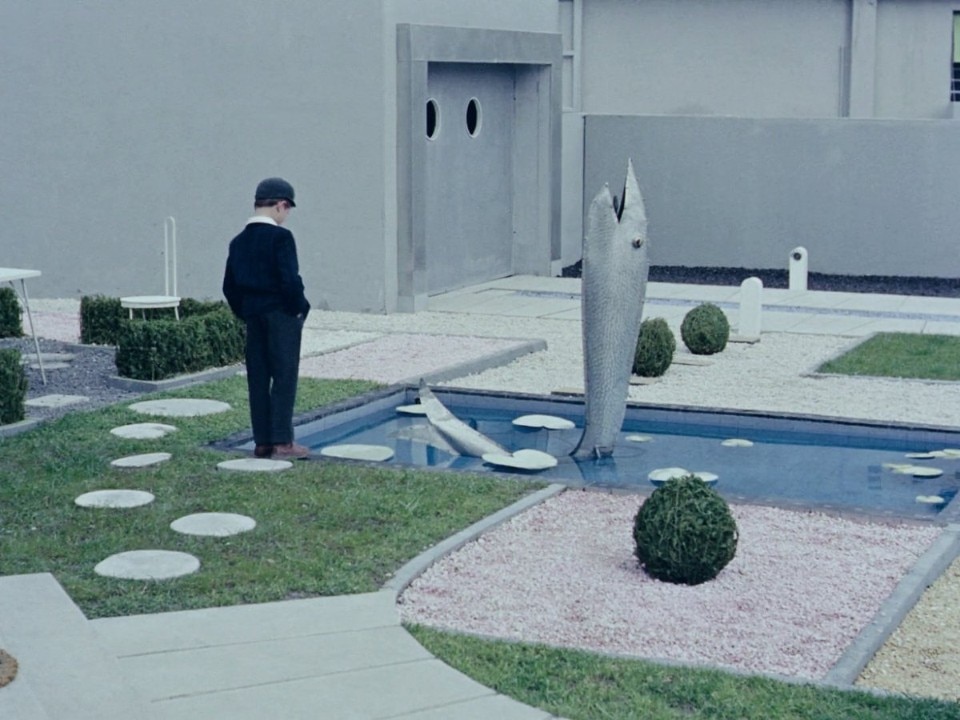
Then again, there is the early smart swimming pool of the luxurious Californian villa in The Party (1968) by Blake Edwards, where a wild and destructive Peter Sellers topples bodies, objects, and dreams of grandeur. There is also the archaic pool where the forgetful Nanni Moretti in Red Wood Pigeon (1989) seeks redemption for his epochal political defeats through water polo.
There is the pool around which the wild pool party of The Wolf of Wall Street (2013) by Martin Scorsese takes place, the one where father and daughter reconnect in Somewhere (2010) by Sofia Coppola, the poolside where the protagonist of The Graduate (1967) by Mike Nichols lounges, and the one where Ramona (Sabrina Ferilli) lazily floats in The Great Beauty (2013) by Paolo Sorrentino. On the other hand, the inflatable pool in Bad Tales (2020) by the D’Innocenzo brothers, stabbed by the unemployed father who then puts the blame on gypsies or jealous neighbors, symbolizes the frustrated dreams of a small bourgeoisie gradually collapsing into meaninglessness and an unstoppable self-destructive impulse.

As mentioned at the beginning, in the imaginary world shaped and voiced by cinema the pool can also take on negative and even lethal connotations: at the beginning of Io sono l’abisso (2022) by Donato Carrisi, for example, it is in an abandoned pool, with stagnant water filled with dead leaves, where an unnatural mother attempts to drown her little boy. And it is also in a pool – albeit empty and without water – that one of the protagonists of the third episode of Kinds of Kindness (2024) by Yorgos Lanthimos commits suicide.
Even in the world of Barbie (2023), the kidney-shaped pools are without water, a blue spot in the all-pink universe of Greta Gerwig: but those are filled with imagination. And our fascinated and amused suspension of disbelief.
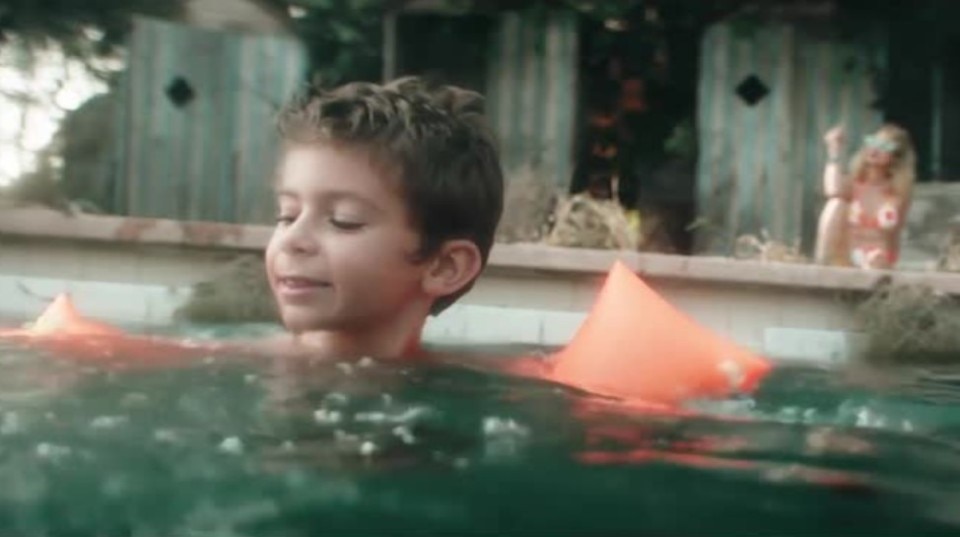
Opening image: François Ozon, Swimming Pool, 2003

Technology and design for innovative washrooms
Fumagalli, a leader in the washroom industry, offers innovative and customizable solutions, combining design, efficiency and sustainability for contemporary and functional environments.

